2019 Alchemy Arktos 29
Size Tested: Large
Geometry: See Below
Build Overview (GX Eagle Build Kit):
- Drivetrain: Sram GX Eagle
- Brakes: Shimano XT M8000
- Fork: Fox 36 Factory
- Rear Shock: Fox DPX2 Factory
- Wheels: DT Swiss M1700 Spline
Wheels: 29′′
Travel: 140 mm rear / 160 mm front
Blister’s Measured Weight: 30.95 lbs (14.04 kg) without pedals
MSRP: $5,199
Reviewer: 5’9”, 155 lbs (175 cm, 70.3 kg)
Test Locations: Montana, British Columbia
Duration of Test: ~2 months
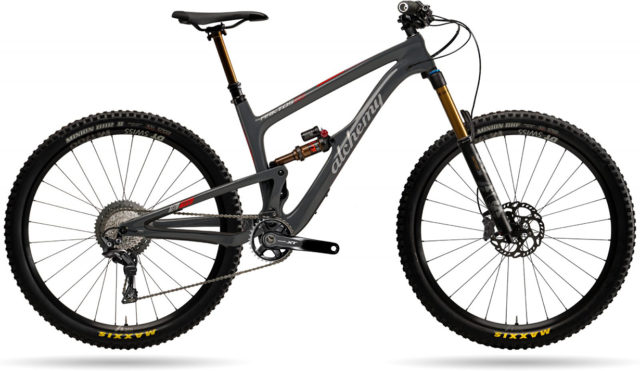
Intro
Alchemy positions the Arktos 29 as an allrounder — this is their one-trail-bike-to-do-it-all, and they emphasize the Arktos 29’s downhill prowess, saying that the bike is, “efficient, responsive, and provides downhill capabilities unparalleled in today’s crop of modern trail bikes. It will truly transform your ride.”
Alchemy made a name for themselves in the mountain bike world as one of the first companies producing handmade, made-in-the-USA, carbon, full-suspension frames. When it first came to market, the Alchemy Arktos turned a lot of heads for being clean, sexy, and expensive.
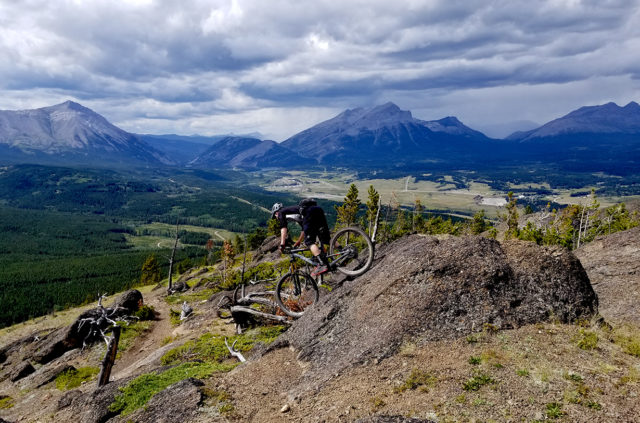
Fast forward to today, and the Arktos is still clean looking and sexy, but it’s priced more or less in line with most other bikes in its class. The difference? It’s made in Taiwan.
Now, a frame from Asia isn’t, in and of itself, a bad thing — the vast majority of bikes these days are made somewhere in Asia, so the Arktos is in good company here. But Alchemy built their brand on bikes that were handmade in the USA, and there’s nothing on their website that gives any indication that the Arktos isn’t made in the USA. Their website talks about “Handmade USA Carbon” and says “every carbon fiber bicycle we make by hand” and “we have perfected our process with decades of experience and every step is done in-house by our master bike builders.”
While it may be true that the Arktos is made by hand (since most carbon bikes are), the hands that made this particular frame were working in a Taiwanese factory, and I think it’s poor form that Alchemy is still presenting themselves simply as a “made in the USA” brand — some of their bikes are still made in the USA, but it’s not particularly clear on their website which frames are produced in the USA vs. which ones come from Taiwan.
Notwithstanding the issues I have with Alchemy’s marketing, the question remains: is the Arktos 29 a good bike?
The Frame
The Arktos is available in a few versions — the 29 (which I rode), the new 29 ST (short travel), a 27.5 version, a limited-edition “27.5 LE” version, and they’re now offering a “mullet” version (29” in the front, 27.5” in the rear) called the Nine7Five. The 29” version features 140 mm travel in the rear, the short-travel version bumps down to 120 mm travel, and the 27.5 bumps up to 150 mm travel.
All models are built around Alchemy’s “Sine” suspension platform, which was developed by David Earle. It consists of a system where the rear triangle swings around a large pivot that’s in line with the chainring. But that pivot is actually mounted to a short dogbone link that’s mostly hidden behind the chainstays. That additional dogbone link allows the use of an upper rocker link that drives the shock and modifies the leverage ratio.
Attentive readers might note a similarity to another suspension design on the market — Yeti’s Switch Infinity system — and the two designs are pretty similar both in terms of pivot layout and kinematics. The biggest difference, at least from a design perspective, is that the Arktos’ Sine linkage is based around traditional pivots with traditional bearings. Yeti’s Switch Infinity system uses custom-made mini sliders made by Fox. While I haven’t had any issues with the Switch Infinity system, the pivoting design of the Sine system on the Arktos seems like a much simpler and cheaper option to achieve what is ultimately a pretty similar effect.
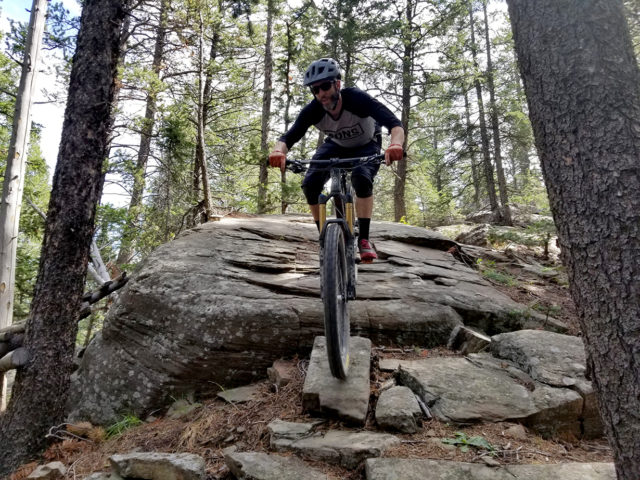
The “Sine” name of the system comes from the leverage curve, which is slightly regressive to start, progressive through the middle of the travel, and then returns to regressive at the end of the shock’s stroke (which, when graphed, resembles a sine wave). The idea is to provide more suppleness through the beginning of the stroke for small-bump sensitivity and traction, support through the middle of the stroke for pumping, and easing off again at the end of the stroke to combat the ramp-up that’s inherent to air shocks.
In theory, that all mostly makes sense. In reality, the result is essentially a linear leverage rate. A traditional sine curve oscillates around a given value, and for the most part, so does the leverage ratio on the Arktos. So what that means is, the leverage ratio at the beginning of the bike’s travel is about the same as the leverage ratio at the end of the bike’s travel, meaning that, on the whole, the bike has a linear leverage ratio (technically, it’s actually mildly regressive, but for most of the stroke, it’s fairly linear) . And while the leverage ratio does start regressive, go progressive, and then revert to regressive again at the end of its stroke, those transitions are relatively subtle. I’ll get more into how all that feels on the trail, but for the moment, suffice it to say that the suspension on the Arktos feels very linear.
On a more practical note, the pivots are burly, with stout, high-quality hardware throughout. I haven’t had any issues with pivots loosening, although one of the DU bushings in the shock has developed some play. That’s not unusual, but it happened a bit quicker than I would have expected.
Cable routing is internal through the downtube, with the rear brake and derailleur lines exiting behind the bottom bracket. From there, the rear brake runs externally, and the rear derailleur runs inside the chainstay. Where the cables exit the downtube and transition onto the chainstays, the frame has some of the worst cable routing I’ve seen on a modern bike. Out of the box, both the brake and derailleur lines rubbed on the rear tire. The only apparent way to fix that was to run zip ties around the chainstays. While that’s an easy fix, it creates some tight bends for the cables, and frankly, I don’t think it’s the sort of problem that a modern, $5,000 bike should have.
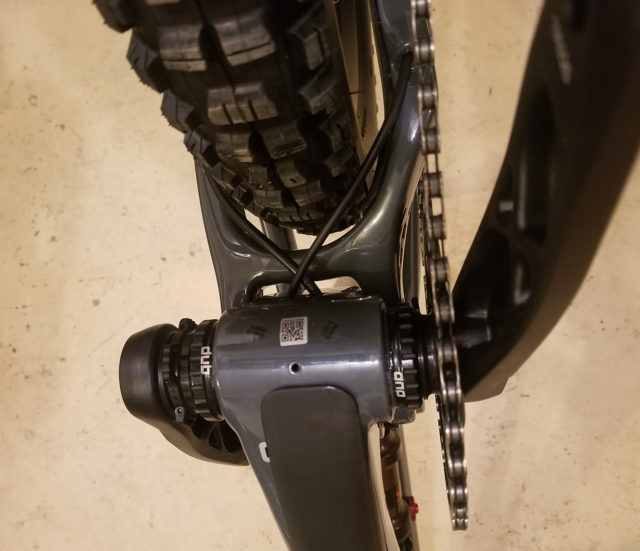
Aside from the cable routing, my biggest gripe is the lack of a viable water bottle mount. Technically, there’s a bottle mount under the downtube, but given that I’m not a fan of horse crap being flung onto my water bottle, a bottle under my downtube isn’t a viable option. Most modern bikes have found a way to cram a water bottle into the front triangle, and I think the Arktos needs to catch up in that regard.
The Build
Alchemy offers five build kits for the Arktos 29 with kits from both Sram and Shimano. I rode the SRAM GX Eagle kit, which, at $5,199, is one level up from the base-model XT Build ($4,899).
As the name implies, the GX Eagle kit is built around a GX Eagle drivetrain. For the last couple years, the GX Eagle kit has been my go-to component spec. Yes, it has plenty of flaws and it’s not as durable as X01 Eagle (or many of the Shimano offerings), but the range offered by the Eagle cassette combined with the GX price point was tough to argue with. Now that Shimano has finished their five-year meandering process of catching up with the market, I suspect that XT 12-speed will be my new preference, but I haven’t spent enough time on it to make the final call. But if you’re interested in taking that plunge, Alchemy offers an XT 12-speed build for $5,699.
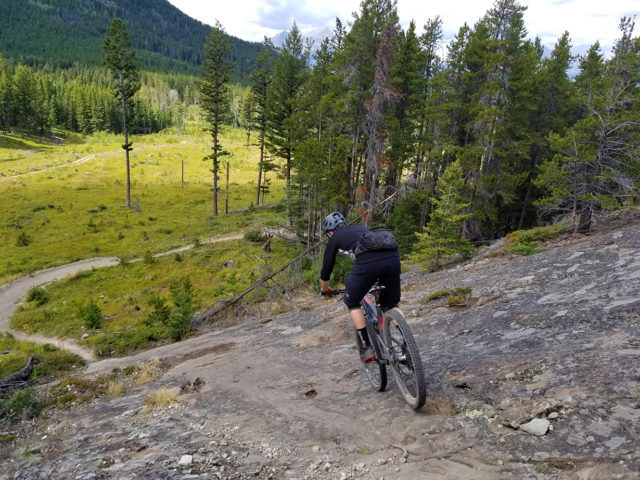
My only nitpicky gripe about the drivetrain is that Alchemy specs 175 mm cranks. Most bikes in this class are running 170 mm cranks, and while there’s a discussion about biomechanics to be had here, my conclusion is simply that I hit my pedals on the ground a lot more often with the longer cranks.
An oddity on the GX Eagle build is the inclusion of XT M8000 brakes. In fact, every Arktos build has M8000 brakes except for the XTR package, which has XTR brakes. Some people love XT brakes for their power, others (like me) don’t really like them for their lack of modulation and perpetually wandering bite point. But in the context of this build, what really irks me is that the M8000 lever mount doesn’t play well with the GX Eagle shifter mount, and Alchemy doesn’t include a mismatch adaptor, which means I could never quite position the shifter where I wanted it. The build also includes center-lock rotors, which, in my opinion, solve roughly zero problems but create at least three new ones.
While the frame doesn’t have ISCG mounts for a chainguide, it does have a mini chainguide built into the frame. This did a fine job of keeping the chain on, although some people might miss having a taco / bashguard on the underside.
Suspension throughout the Arktos lineup is provided by Fox, and is top-of-the-line across all builds. At the front of the bike is a 160mm-travel Fox 36 Factory with a Grip 2 damper. That’s an excellent fork, and is probably the best possible pairing for this bike. On the rear is a Fox DPX2 Factory with an Evol aircan. Again, that’s a top-of-the-line unit, and like the fork, I can’t think of a better rear shock to put on this frame. Alchemy knocked it out of the park on specing the suspension for this bike, and it’s really nice that you get top-notch suspension, even on the less expensive builds.
Wheels in the GX Eagle kit are DT Swiss M 1700 Spine — they have a 30 mm rim width and roll on DT Swiss’s well-proven hubs. This isn’t a particularly fancy wheelset, but it works great and has held up fine in my time on the Arktos. Alchemy also offers the option to upgrade to some Enve M630 wheels for $1700, which is a pretty good deal by Enve standards.
Those wheels come clad in Maxxis rubber, with a 2.5” DHF up front and 2.4” DHRII in the rear. Those are great tires on a bike like this; there’s a reason that most bikes in this category come with a similar spec. And as with most other companies, I’m going to complain about specing bikes like the Akrtos with Maxxis’s Exo casing — I tore the rear tire about 2 minutes into my first ride. Yes, this is my fault for perpetually forgetting that I need to run a bazillion psi in Exo tires to keep them from flatting. But still, this is an Enduro-ish bike. Spec it with Enduro-ish tires.
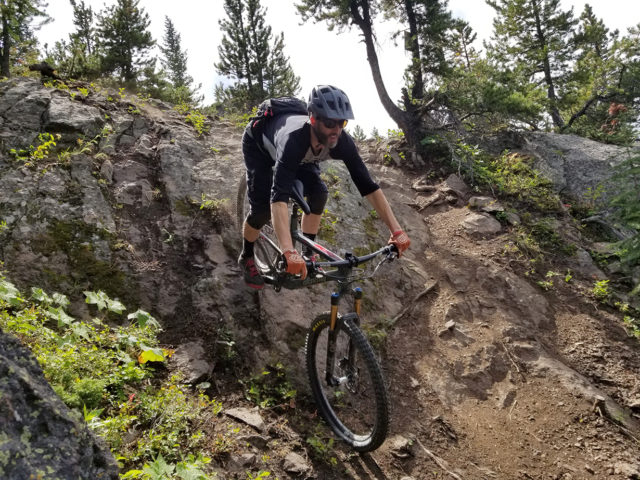
Rounding out the build is an assortment of non-flashy but perfectly serviceable parts. Race Face Aeffect bits make up the cockpit with Ergon grips. I did end up swapping the stem to a shorter, 40 mm Race Face Turbine, and the bar to a lower-rise Enve M7 in my quest to get the handlebars lower.
The dropper post is a 150mm X-Fusion Manic, which has been problem-free during my time on the bike. And on top of that post is a WTB Volt Race saddle, which few people will hate, but similarly few people will absolutely love. According to my butt, it’s adequate.
Geometry and Sizing
The Alchemy is offered in four sizes (Small through XL), and generally speaking, the sizing is pretty average by modern standards. Bikes have taken a pretty dramatic turn towards getting longer over the past few years, and the Arktos’ sizing generally recognizes that trend, but isn’t leading the charge. For most people, I think that’s likely a good thing — it’ll be easier to hop on the Arktos and feel comfortable.
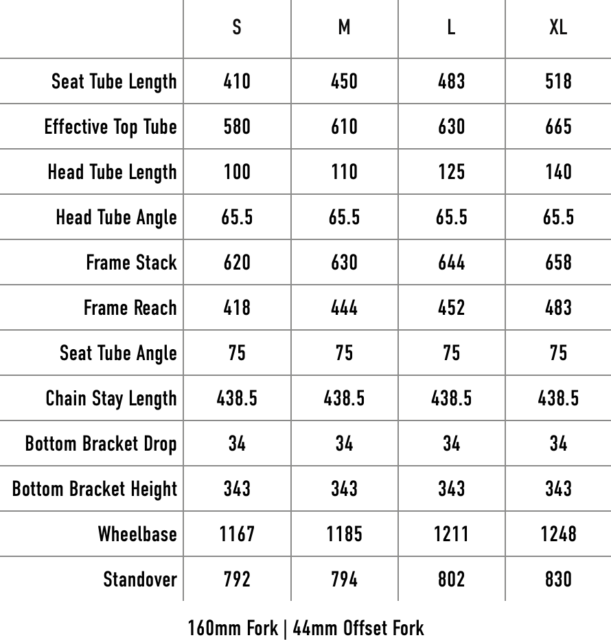
A size Medium Arktos 29 has a 444 mm reach measurement, which bumps up a relatively small amount to 452 mm on a size large. The effective top tube lengths are 610 mm on a Medium, and 630 mm on a Large. All of those numbers put the Arktos somewhere in the middle of the spectrum of 2019 bike sizes. For example in any given size, it’s a longer bike than a Specialized Stumpjumper, but smaller than a Transition Sentinel.
In terms of fit, I pretty much agree with Alchemy’s posted geometry chart. At ~5’9”, they suggest that I could ride either a Medium or a Large. I went with the Large, and I’m happy I did — it feels comfortable to me, but I’m also fairly at home on bigger bikes. For people who are waffling between sizes, I think the effective top tube will be the deciding factor — getting too stretched out while seated can make for a sore back on longer climbs. So if you’re undecided, take a look at those numbers for the Arktos and compare them to a bike you’re comfortable on.
The trend of “modern, but middle of the road” extends to other numbers like the head tube angle (65.5°), the chainstays (438.5 mm), and the effective seat tube angle (75°). With respect to the seat tube, it’s also worth noting that it’s pretty straight, which will make it easier to fit extra-long dropper posts in there.
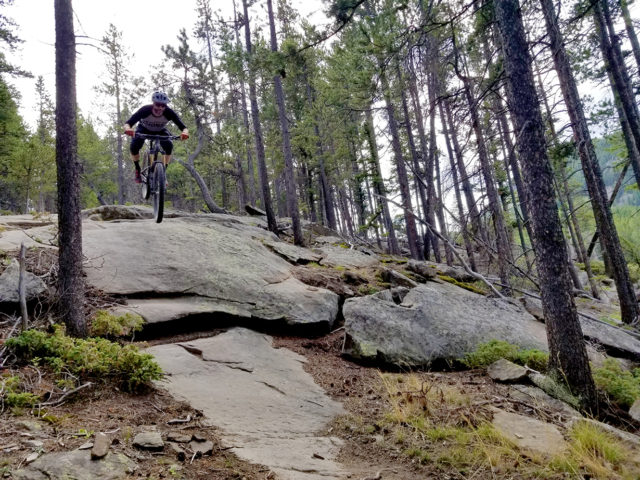
The one aspect of the Arktos’ geometry that stands out to me as strange is the headtube length, and (related) the stack height. The Large Arktos 29 has one of the longest headtubes (125 mm) for its size that I’ve seen on a modern bike (and the XL is quite a bit longer in this department — 140 mm). The front end of the Arktos 29 is already a bit tall by virtue of having a fork that has 20mm more travel than the rear. Combining that with a long headtube makes for a really tall stack height, and on the trail, that means that the handlebars feel really high. Handlebar height is kind of a personal preference thing, but while it’s pretty easy to raise the handlebars on a bike with a short headtube, it’s not so easy to lower the handlebars on a bike with a long headtube.
Lastly, if any of those numbers and measurements sound confusing — or you just want to learn more about how to read any bike’s geo chart — check out our Bike Fit & Geometry 101 and 102 articles.
On the Trail
The Arktos is really defined by the Sine suspension design and the resultant, relatively linear leverage ratio. While there are all kinds of different suspension designs on the market these days, most of them are, on the whole, progressive in nature, meaning the suspension “ramps up” as the suspension compresses. The Sine suspension design only ramps up by virtue of the natural progressiveness of the air shock, and thus ramps up a lot less than many other bikes on the market. The Arktos isn’t, by any means, the only bike with a more linear suspension design, but that sort of design is the exception these days, rather than the rule.
Traditionally, bikes with a more linear suspension design require a bit more air pressure in the shock to keep from bottoming out harshly (since they don’t ramp up as much at the end of their travel), which usually means they’re a bit less supple on small bumps. But the trade-off is that they’re more predictable and more supportive through the middle of their stroke, and tend to be really good at pumping and popping.
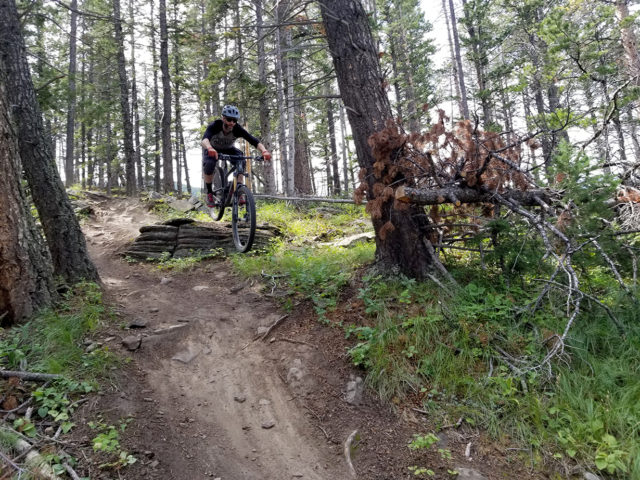
The Arktos definitely has the traditional upsides of a linear suspension design — it pumps well, it pops well, and it generally feels supportive through the middle of its stroke. When you push it into a bermed corner, it doesn’t feel like it mushes super deep into its suspension. You can do a better job of pumping through the corner and maintaining speed. That same feeling comes from pumping over rollers in the trail — the Arktos does a better job of building speed off of rider input than a lot of other bikes in this travel class.
This is also why I think the Fox 36 is a perfect match on this bike — the 36 tends to be a bit more supportive than some other forks on the market (namely, the RockShox Lyrik). That supportiveness at the front pairs nicely with the Arktos’ suspension, and it makes for a really balanced-feeling bike.
But what about the downsides of the linear design? Well, the Arktos does a respectable job of minimizing them, and I think a lot of the credit for that goes to the DPX2 rear shock, and what seems to be a spot-on tune on Alchemy’s part. While I certainly wouldn’t say that small-bump sensitivity on the Arktos is class leading, it’s not terrible. Chopping through small-ish trail detritus at speed still feels like the bike has its sights set more on efficiency at speed than rider comfort, but it does a respectable job of maintaining traction when needed. It’s better in that regard than most linear-suspension bikes I’ve ridden in the past.
On the issue of bottoming out on hard hits, well, the Arktos still does that. This is not the bike I’d pick for a huck-to-flat contest. That said, again giving credit to the DPX2, the shock has a good bottom-out bumper, and it handles big hits reasonably gracefully. I knocked the rubber ring off the bottom end of the shock on pretty much every ride, but I never got a defined “clunk” at the bottom of the shock’s travel.
While the suspension is the defining trait of this bike, it’s certainly not the only thing that affects the ride. In terms of the frame itself, the Arktos is stiff without feeling too harsh. Throwing it sideways into corners revealed not much flex, and I’d place it at the stiffer end of modern carbon frames that I’ve ridden.
Cornering on the Arktos feels efficient in terms of how the frame and suspension tracks through a corner, but the tall front end really threw me a curveball here. As I mentioned in the geometry section, the tall fork combined with a long headtube makes the front end of the Arktos a good bit taller than most other comparable bikes in this class.
With the stock setup, I felt like I had a lot of trouble keeping my weight over the front wheel, which led to a lot of understeer in loose corners and a number of terrifying moments. I swapped to a slightly shorter stem, a lower-rise handlebar, and I swapped all of the stem spacers to the top of the stem, lowering the stem as far as it would go. These changes helped the situation, but I still would’ve preferred the bars to be even lower. A confession: I actually searched through my parts bin for an old negative-rise stem. The only one I found was 120 mm long, which probably wasn’t going to improve the situation.
After getting the handlebar as low as I could, the Arktos’ handling was far more manageable, but I still felt like I had to make a very conscious effort to keep my weight forward in corners. And that stands in contrast to a lot of bikes with modern geometry where the long front end naturally shifts weight forward.
But also keep in mind that handlebar height is a personal preference thing, and plenty of people (particularly taller people) will be perfectly comfortable with the Arktos’ stack height and handlebar position. I have a preference for medium to low front ends and I struggled with the Arktos a bit, but if you’re the guy or gal with a 30 mm stack of spacers under your stem, I can guarantee the Arktos’ stack height won’t bother you.
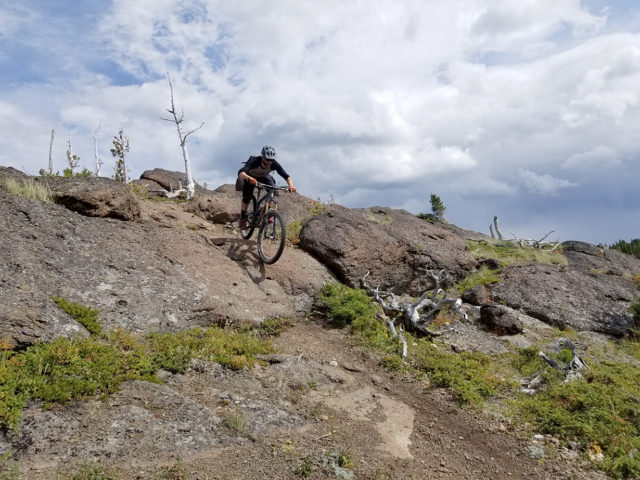
Pumping through rollers and teasing out the bike’s cornering characteristics is one thing, but the Arktos is still a bike that’s billed as an all-arounder, so it needs to climb well too. And when the going goes up, the Aktos does pretty well — as with most bikes in this class, there’s a little bit of noticeable suspension movement when pedaling up a smooth climb, but it’s pretty good on the whole. Similarly, bursts of power thrown at the pedals produce snappy results, and the bike does really well when you get on the gas out of a corner. Similar to some of my conclusions regarding the bike’s descending, the Arktos rewards a racy attitude where you put the effort in to gain speed wherever possible.
On the steepest climbs, the Arktos lags a bit behind some newer bikes that have ultra-steep seat tube angles. The Arktos only has a moderately steep seat angle, and combined with the tall front end, the front wheel gets a bit light sometimes. That said, the Arktos isn’t bad by any means, and I’ve gotten up some steep little climbs on the Arktos that I rarely clean on other bikes, so overall, I don’t think the Arktos is holding me back.
Durability and Maintenance
For the most part, the Arktos has held up beautifully. Nothing has broken, and the bike is creak free. The only relatively minor thing I can point to is, as I mentioned above, one of the DU bushings seems to be wearing pretty quickly — there’s a little bit of play at the shock mount, even with the hardware tightened down. This is a quick, easy, and fairly cheap fix, and would only be an annoyance if the bike continued to quickly eat DU bushings.
Comparisons
There are quite a few bikes in the 140-150mm travel class these days, but there’s one bike that has a lot of similarities to the Arktos.
Yes, this bike is no longer in production. But its suspension was designed by the same guy as the Arktos, it has about the same amount of travel as the Arktos, the geometry is pretty similar to the Arktos, and both bikes are built around a linear suspension design. And ultimately, all of those similarities add up to two bikes that ride pretty similarly.
The Arktos’s geometry is a bit more modern than the SB5.5 — it’s a bit slacker, a bit longer in the front end, and the seat tube angle is a bit steeper. All of those changes make the Arktos feel more comparable to most other modern bikes, and make it a little more comfortable at speed (while perhaps giving up a little maneuverability at slower speeds).
But both bikes have the same linear suspension feel — they’re supportive through the mid stroke, but struggle with big hits. The Arktos is a bit better than the SB5.5 on smaller bumps, I think mainly due to the excellent tune on an excellent shock.
Purely in terms of suspension, the Arktos has enough small tweaks to win out. But its sub-par cable routing and the extra-tall front end drag the Arktos down. So at least for me, those last points give the SB5.5 the edge. Ultimately, that may be a moot point since the SB5.5 isn’t in production anymore, but if you loved everything about the SB5.5 and want a new one with modernized geometry, the Arktos may be the bike for you.
Yeti SB130
I haven’t gotten enough time on an SB130 to make an honest comparison here. But two considerations:
(1) In a given size, the SB 130 is quite a bit longer than the Arktos. While the Arktos’ geometry is conservatively modern, the SB130’s numbers are fairly progressive. The SB130 has a much longer reach, a correspondingly longer wheelbase, a steeper seattube angle, and (notably) a much shorter headtube length. That all adds up to the SB130 almost certainly being more stable at speed.
(2) Unlike the SB5.5, the SB130 has a moderately progressive leverage ratio. I expect the SB130 would give up a little bit of that predictable mid-stroke support that you get from a linear design, but gain some small-bump compliance and bottom-out resistance. Bonus consideration: the SB130 fits a waterbottle in the front triangle.
Bottom Line
The Alchemy Arktos is a nicely made frame, and its Sine suspension design offers something a bit different from most other brands these days. Most brands have been gravitating towards a more uniformly progressive suspension design; Yeti used to be the go-to brand for linear-suspension bikes, but they’ve followed the modern trend and gone progressive. So Alchemy is something of a hold out in this regard.
If a supportive, predictable suspension design is what you’re after, the Arktos is a well-executed version of it with top-notch suspension mounted up on all builds. It pumps and pops nicely, and it responds well on the pedals. Ultimately, the question of whether someone prefers a more linear suspension design or something more progressive is a matter of preference, and truth be told, modern damper units have closed the gap between the two to some extent. That said, I think there’s a reason that most companies are gravitating to a more progressive design; while it’s not the right answer for everyone, it seems to be the answer for most.
Beyond the suspension, the poor cable routing, lack of a feasible water bottle mount, and tall stack / head tube length all make this bike a bit harder to recommend. This isn’t to say that it’s a bad bike by any means, but there are a lot of great bikes out there, and the Arktos struggles to set itself above a large number of competent, comparable options. Which brings me back to the suspension design: the person who should buy this bike is the person who really wants a linear rear suspension. While I do think that limits the audience for this bike, the Arktos’ suspension is increasingly unique in the marketplace, and if a very linear feel is what you’re after, the Arktos is one of your best (and very few) options.

I enjoyed your well written “nit-picking” review. However, the feeling I get reading your dislike for the “tall stack” has me wondering if you chose the right size bike for your height. You take pain to go into detail throughout the review, yet your decision to go with size large seems not serious and impulsive: “I went with the Large, and I’m happy I did — it feels comfortable to me, but I’m also fairly at home on bigger bikes.” With a longer stem and lower stack of medium, maybe the front end wouldn’t have felt so light.
While sizing could be an issue, I’ve seen all of two Alchemy bikes in the wild and they both had such lengthy headtubes. It’s not just the sizing, as going down a size would have an effect on the reach, it’s the actual size of the headtube.
Noah, all your rear suspension comments lead me to ask whether you considered going with a slightly larger volume reducer in the rear shock?
But that cable routing is a stone cold deal-killer, regardless.
I just got one of these bikes and have about 5 rides on it. Awesome bike! As far as the cable routing at the bottom bracket, why do the cables have to criss cross? Seems to me they would have a better run not being criss crossed. I guess there is a reason for them to be like this…
I’ve been on the bike for over a year.
I personally am 5’9″ but like the Medium size with a 60mm stem and Enve mid-rise bars. I don’t have an issue pushing the bike through the corners; I feel the bike is relatively planted in the “middle” rather than “back” like an SB130 if that makes sense.
Additionally, while the suspension FEELS linear, it’s clearly not….it sits in the middle of the stroke most often, so it feels “the most” active vs riding high like a DW or VPP bike–but then again there is less active pedal feedback. I think your comparison to the Yeti platform was pretty spot on.
Regarding the cable routing, it’ve NEVER had an issue, and the cables have always been fine, even with a 2.6 rear tire. Weird.
My Arktos 29 just arrived. Love the bike so far. Great purchase experience with Alchemy. Same build as the review. The build and spec on the bike is great, Fox Factory suspension front and back . I’m 5’8″ and got a medium, the fit is really good, very similar fit to the Yeti SB 130 that I also looked at. First ride impression was very good, but limited in what I could ride as winter has now set in (time to go skiing). The water bottle cage is not an issue for me as I ride with a hydration pack.
Doug, just out of curiosity when did you order your bike? I ordered a Large (same color as reviewed bike), and I have been waiting 7 weeks…and supposedly still another 3.5 weeks out. Just wanted to see if I was the only one waiting this long for my Alchemy.
Thanks
Ordered end of October, It took a week to build and the FedEx took 2 weeks to deliver to Canada. Size medium.
Zach:
I bet the ordering and timeline depends on the color selected….and size. They sell out, that’s not uncommon for small run production bikes like this one. Have you talked to Alchemy about doing a different color if available? ALSO, hold out and wait–it’ll be worth it! This bike is SUPER rad, I know I am happy.
In fact, I just ordered a new XT 12 speed bike with the ST linkages to reduce the travel a bit…so many great reviews of the ST frame I just couldn’t resist!
So, be patient, but be diligent in getting what you want.